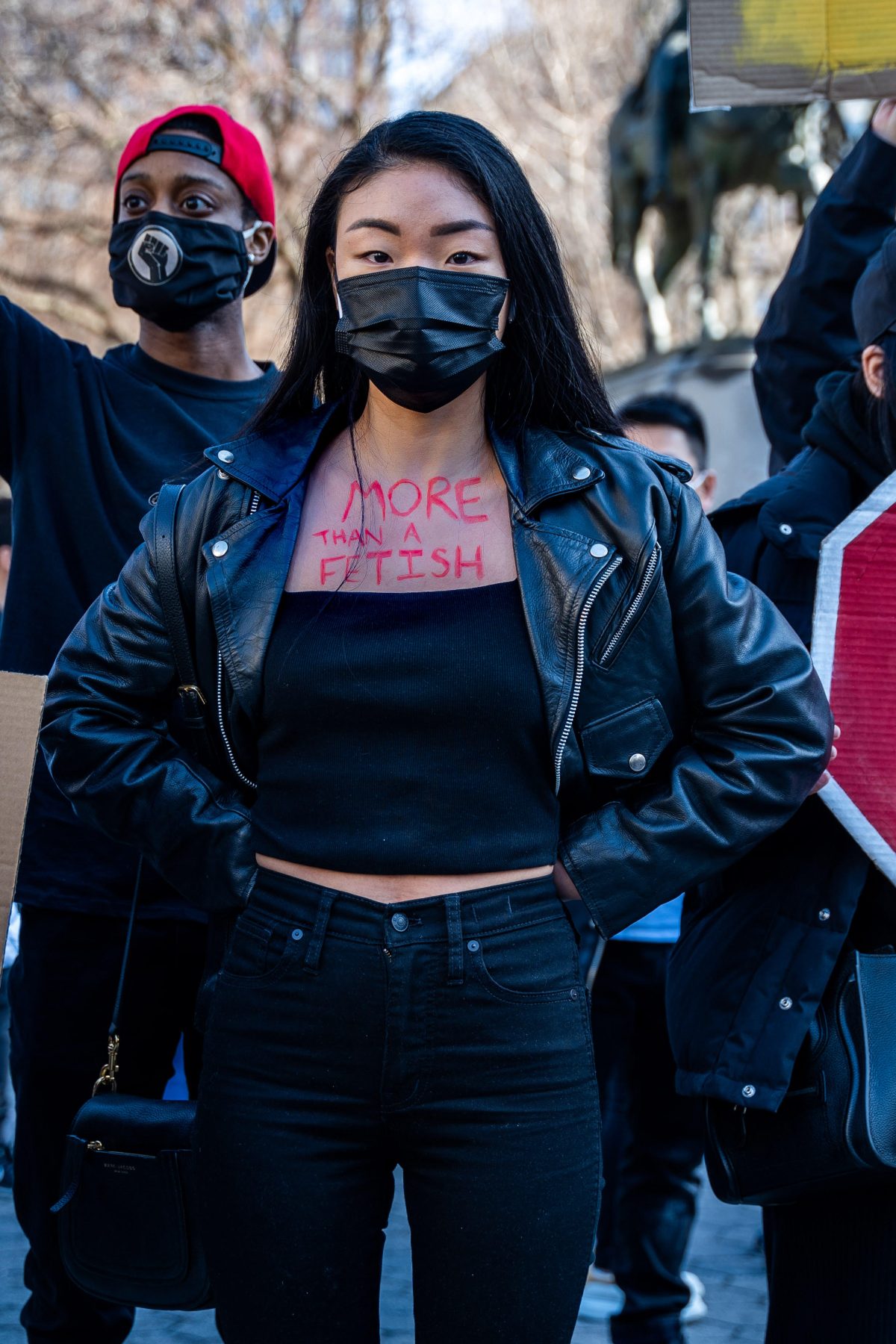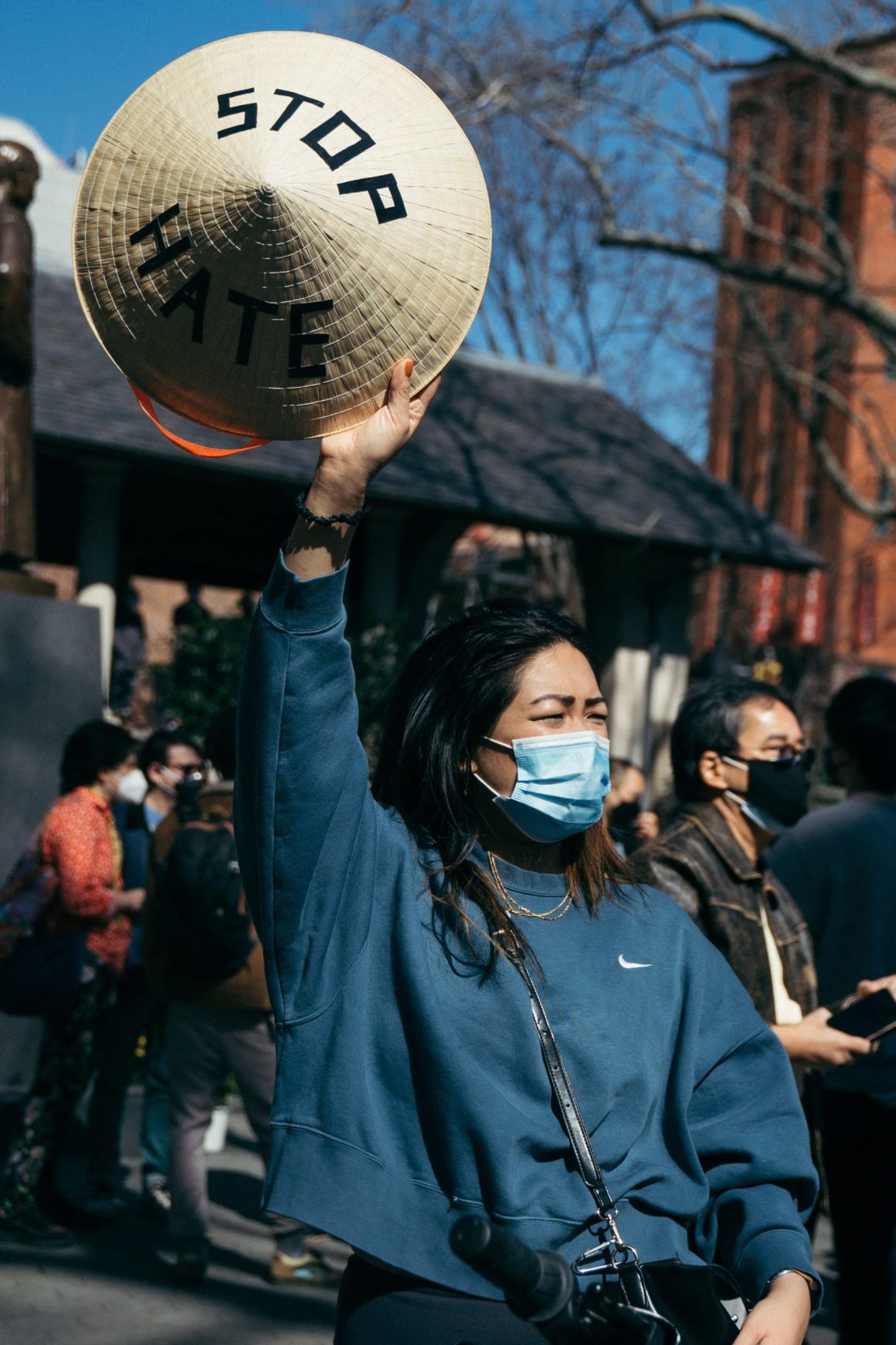by Hakim Bishari | republished from Hyperallergic

In the wake of the horrific shootings in Atlanta, Georgia last week, which claimed the lives of eight local spa workers, among them six women of Asian descent, museums across the country have responded with statements denouncing the escalating violence and xenophobia against Asian American Pacific Islander (AAPI) communities in the United States. But what could museums and art organizations do, beyond proclamations of solidarity, to confront a social malady that dates back to the founding days of this country?
“We are tired of the awkward silences and toothless affirmations,” shared the advocacy group Stop DiscriminAsian.
Stop DiscriminAsian (SDA), a coalition of art workers that formed last year to record and combat the upsurge in racism and violence against people of Asian descent since the beginning of the COVID-19 pandemic, is critical of the recent response by art institutions like the Smithsonian’s National Museum of Asian Art, the Metropolitan Museum of Art, and others.
“While we appreciate the statements of support and solidarity from arts institutions, we call upon them to also look within their own walls and find ways of directly supporting their employees of Asian descent, instead of choosing to speak to their majority white audiences through these nonbinding statements,” SDA told Hyperallergic in an email.
A recent study conducted by the Center for the Study of Hate and Extremism at California State University, San Bernardino, found that while hate crimes in the US declined overall by 7% in 2020 compared to 2019, hate crimes against AAPI peoples surged by 149%.

Since March last year, SDA has been collecting testimonies from victims of these racist attacks in a Google spreadsheet titled “WE ARE NOT COVID.” A submission form on the coalition’s website invites individuals who have experienced such xenophobic attacks to share their stories. Other groups, like Stop AAPI Hate and Asian Americans Advancing Justice, have launched similar initiatives.
But the SDA thinks that the task of raising public awareness of the alarming rise of anti-Asian hate crimes should not be left only for AAPI-led advocacy groups like them.
“For a year we have been organizing around and speaking out about anti-Asian xenophobia, and we are tired of the awkward silences and toothless affirmations. It is time for museums to do the hard work,” SDA told Hyperallergic. They continued:
As a group composed entirely of arts workers, SDA knows how overwhelmed and even traumatized our colleagues are at this moment, and we want to know that institutions, our employers and our colleagues, will support us rather than lean on us to do the work of educating the public about the vitriol and attacks that we’ve been experiencing.
The group also thinks that museums should reexamine their own institutional practices, and “ask how their role as exhibition-makers, public programmers, educators, and stakeholders within their respective communities might be doing harm to their Asian and Asian diasporic audiences.”
“Art is indeed a conduit for understanding global culture, but can institutions — especially those that collect and display art and artifacts from Asia and the diaspora — extend their care to the people who have created such works and who labor under their roofs?” the group asked.
“These livelihoods are and have been under threat, and can no longer be divorced from the objects that have brought you visitors, donors, and acclaim for generations,” SDA members added. “We are valuable. We are in need of support and protection. We are here, and have been here.”

